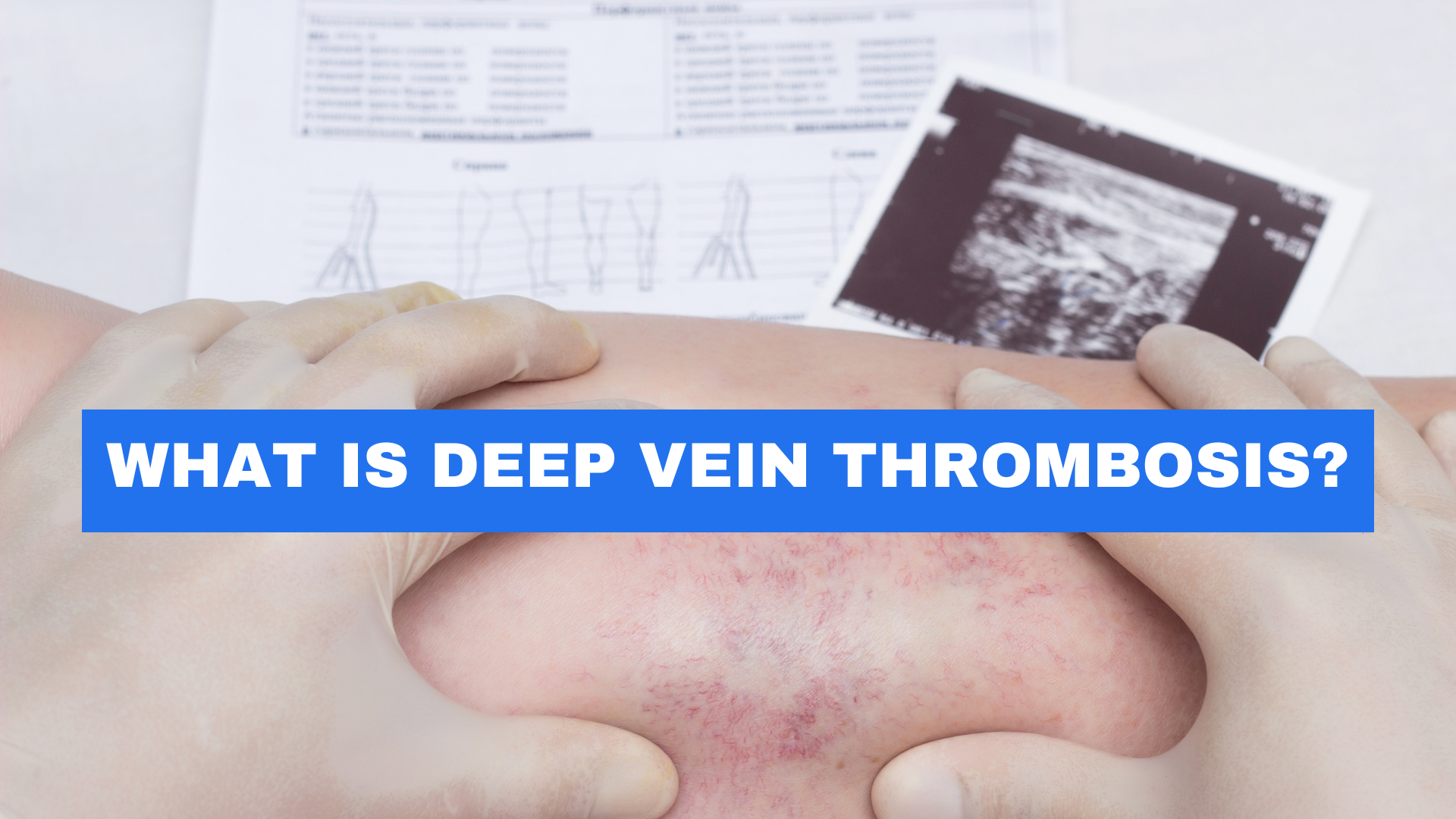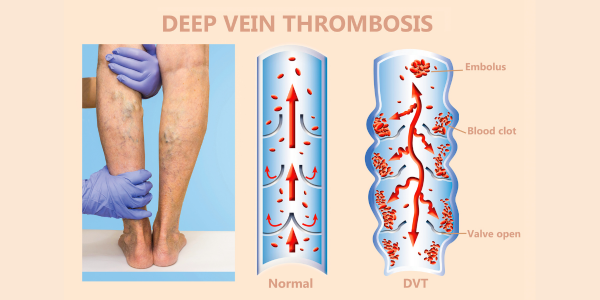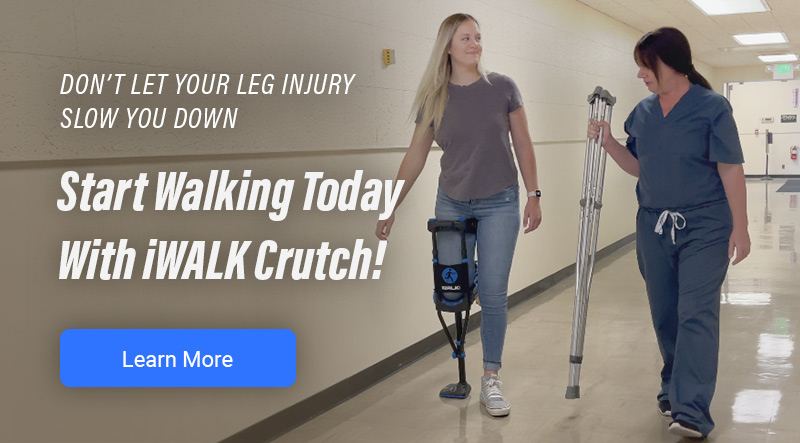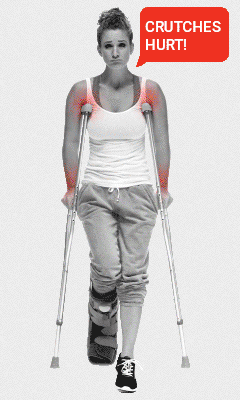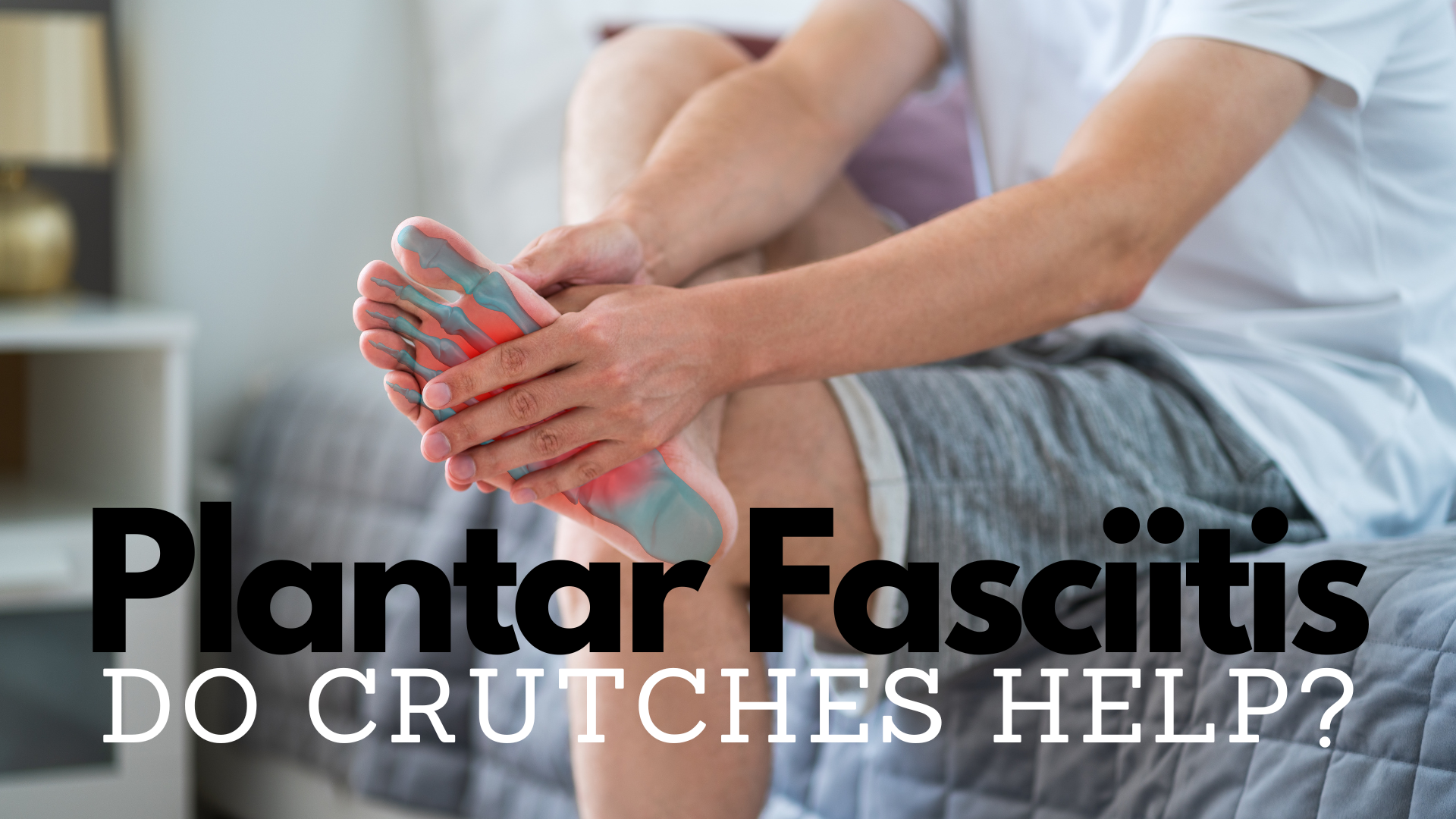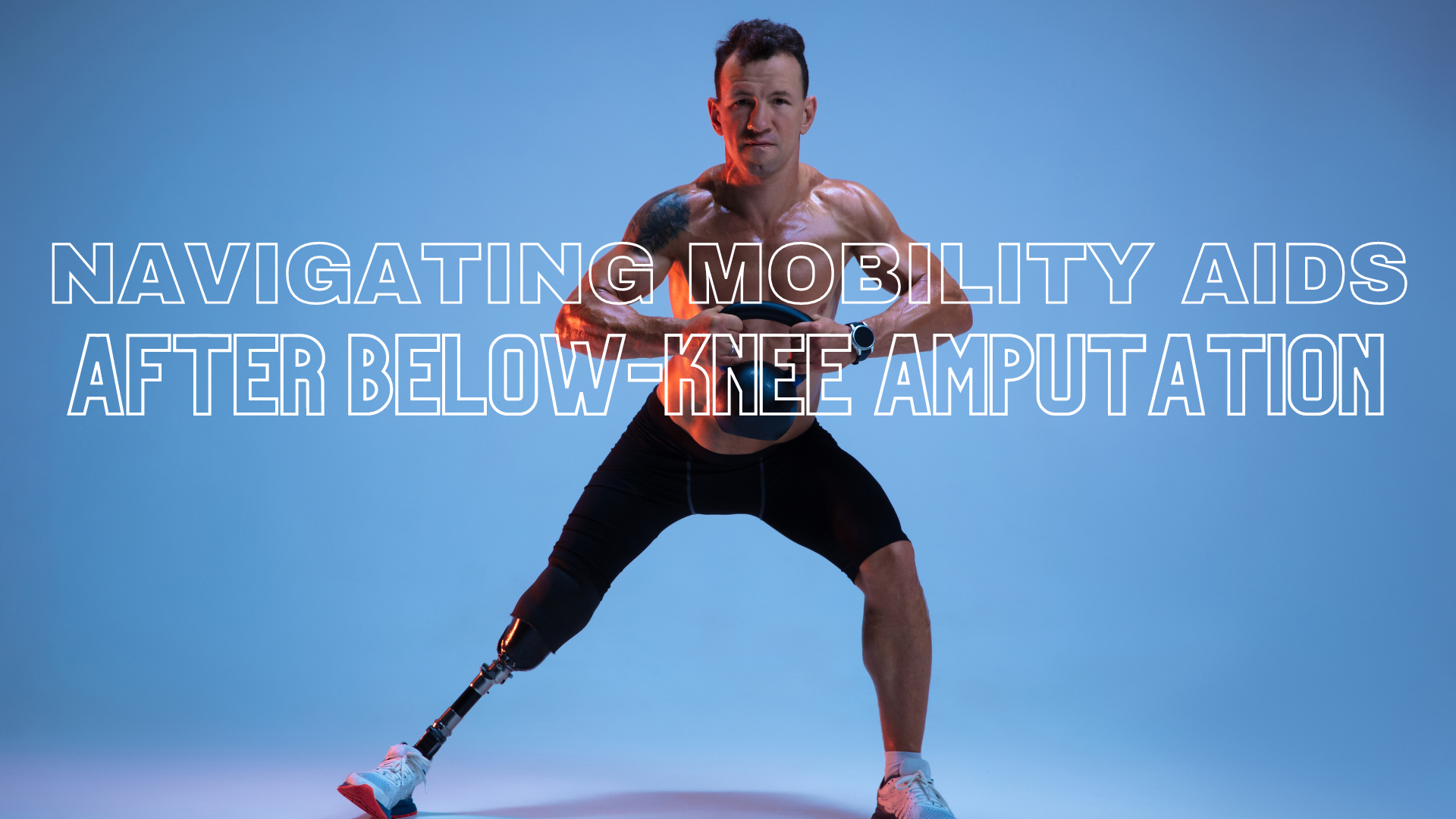Deep Vein Thrombosis (DVT)1 is a potentially life-threatening condition characterized by the formation of blood clots within deep veins, typically in the legs. These clots can break loose, travel through the bloodstream, and lodge in the lungs, causing a pulmonary embolism—a severe complication that can be fatal. Also, blood clots from DVT can travel through the heart and back to the brain, a condition called paradoxical embolism. This can cause a stroke. Understanding the causes, symptoms, and preventive measures of DVT is crucial for anyone at risk, particularly those using crutches or knee scooters due to injury or surgery.
Symptoms
Recognizing the symptoms of DVT is crucial for early detection and treatment. Common signs include swelling, pain, tenderness, and warmth in the affected leg. However, it’s important to note that not everyone with DVT will experience symptoms, making it a silent threat.
Causes
DVT often arises from prolonged periods of immobility, which can disrupt blood flow and increase the risk of clot formation. This risk is heightened for individuals on crutches or knee scooters, as these devices limit mobility and can lead to extended periods of sedentary behavior. Additionally, injury or surgery can damage blood vessels, further increasing the likelihood of clot formation. Other risk factors include obesity, smoking, hormonal birth control, pregnancy, and a family history of blood clots.
Research & Prevention
For individuals navigating lower limb injuries, such as fractures or surgeries, mobility aids like crutches and knee scooters are essential for maintaining independence. However, these aids come with their own set of risks, particularly concerning DVT.
Studies have shown that the incidence of DVT is notably higher among individuals with lower limb injuries compared to the general population. For instance, after foot and ankle surgeries, the prevalence of DVT can be as high as 32%.2 Prolonged immobilization, reduced blood flow, and decreased muscle pump activity associated with these aids contribute to the elevated risk of DVT.
Research has also highlighted the negative effects of traditional mobility aids like crutches and knee scooters on blood flow and muscle activity. Crutches, while providing support, can lead to blood pooling in the lower extremities and increased levels of deoxygenated hemoglobin in muscles, both of which are associated with a higher risk of DVT.3
Similarly, knee scooters, by fixing the knee at approximately 90 degrees for extended periods, can impede blood flow and muscle pump activity, further elevating the risk of DVT.
Fortunately, there are several steps individuals can take to reduce their risk of developing DVT, especially when using crutches or knee scooters. Regular movement and exercise, even while immobile, can help promote healthy blood flow. Following any prescribed rehabilitation or physical therapy routines is essential to prevent stiffness and improve circulation. Additionally, staying hydrated, maintaining a healthy weight, and avoiding prolonged periods of sitting or standing can lower the risk of clot formation. For those at higher risk, doctors may recommend blood-thinning medications or the use of compression stockings to improve circulation.
The iWALK Hands-Free Crutch Reduces DVT Risk
Recent clinical studies offer hope in mitigating these risks. The iWALK hands-free crutch has emerged as just the innovative solution needed to address the shortcomings of traditional mobility aids. Unlike crutches and knee scooters, the iWALK maintains muscle activity in the injured limb, preventing stasis and promoting healthy blood flow. Unlike crutches and knee scooters, the iWALK did not lead to significant reductions in blood flow or vessel dimensions when compared to unassisted walking. Additionally, the heightened muscle activity associated with the iWALK further supports healthy blood circulation, reducing the risk of DVT.4
In conclusion, DVT is a serious condition that can have severe consequences if left untreated. Individuals using crutches or knee scooters should be particularly vigilant about preventing DVT by staying active, following medical advice, and paying attention to any symptoms that may arise. By understanding the causes, symptoms, and preventive measures of DVT, individuals can take proactive steps to safeguard their health and well-being during periods of immobility.
Sources:
- Mayo Clinic Staff. (2021). Deep vein thrombosis (DVT). Mayo Clinic. https://www.mayoclinic.org/diseases-conditions/deep-vein-thrombosis/symptoms-causes/syc-20352557
- Saragas, N. P., Ferrao, P. N., Shah, A. R., Chirwa, P. T., & Govender, S. (2014). Incidence of deep vein thrombosis following foot and ankle surgery in a low-risk patient population with the use of routine chemical thromboprophylaxis. The Journal of Foot and Ankle Surgery, 53(5), 583–586.
- Tesch, P. A., Berg, H. E., & Bring, D. (2004). Acute effects of knee extensor exercise on muscle blood flow and EMG activity in sitting position. Scandinavian Journal of Medicine & Science in Sports, 14(4), 244–251.
- Bleeker, M. W., Hopman, M. T., Rongen, G. A., & Smits, P. (2004). Unilateral lower limb suspension can cause deep venous thrombosis. American Journal of Physiology-Regulatory, Integrative and Comparative Physiology, 286(6), R1176-R1177.

